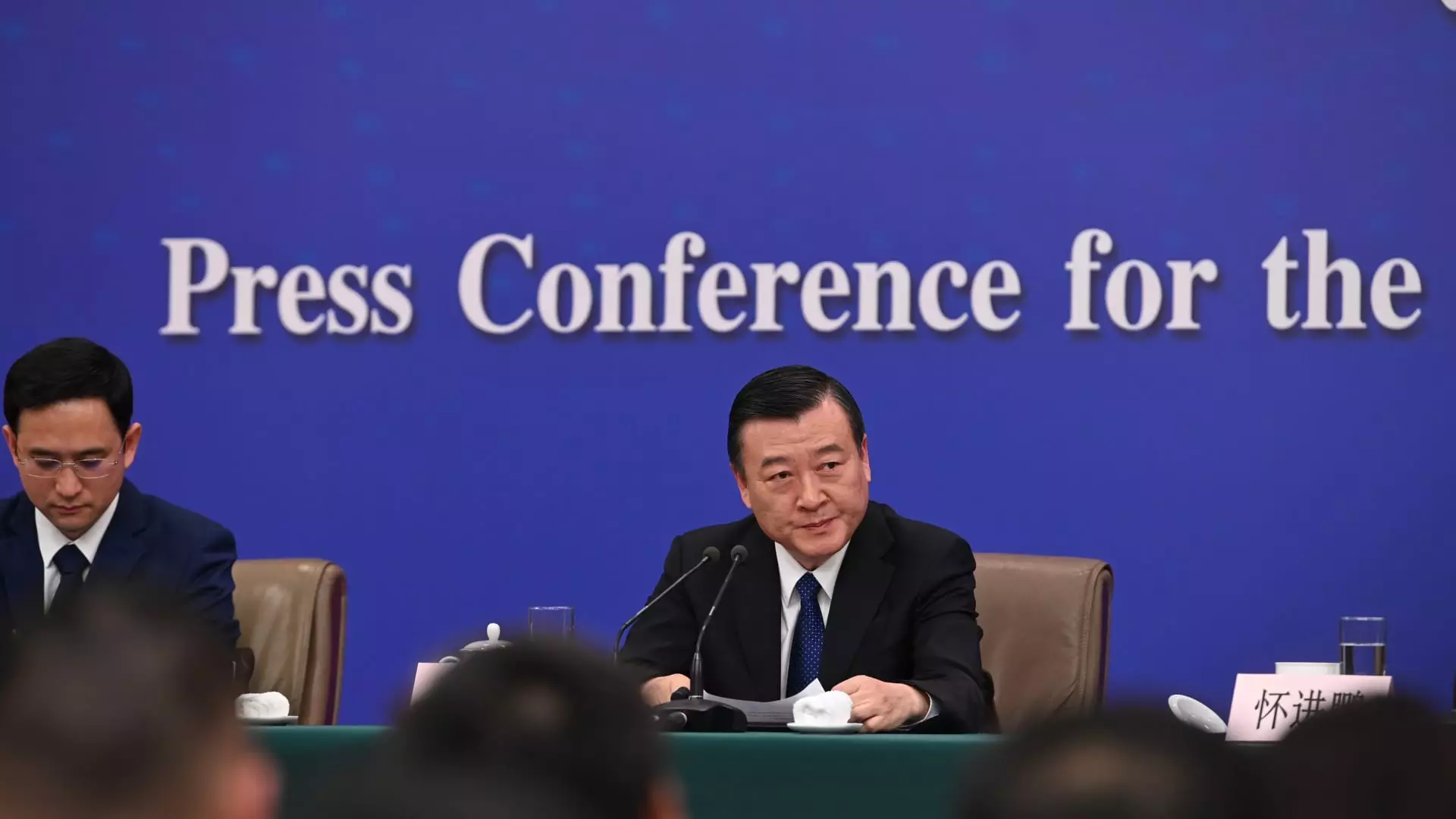In an effort to rejuvenate its struggling real estate sector, China has announced significant financial measures aimed at completing incomplete housing projects and restoring confidence in the market. Recent revelations from China’s housing ministry and related financial institutions highlight a comprehensive approach to tackle the deep-seated crisis afflicting this vital sector of the economy. This article delves into the newly proposed measures, the various stakeholders involved, and the implications for local and national economies.
At the forefront of China’s recent efforts is the expansion of the “whitelist” initiative that enables city governments to nominate specific residential projects for expedited bank funding. By the end of 2024, the targeted lending cap is set to rise to an impressive 4 trillion yuan (approximately $561.8 billion), nearly doubling the already approved loans totaling 2.23 trillion yuan. This ambitious strategy aims not just to expedite project completion but also to ensure that homebuyers receive what they have invested in—a sense of urgency that has been lacking in recent years.
Nonetheless, the inclusion of all commercial housing projects under this scheme raises questions about the broader implications for market stability. Critics argue that simply pouring more funds into unfinished projects may not address the fundamental issues within the real estate market that have led to its current turmoil. It is vital to consider whether this influx of capital will lead to a long-term stabilization or merely serve as a temporary band-aid for a much larger economic wound.
The recent press conference featuring high-ranking officials from various ministries reveals a cohesive approach to tackling the housing crisis. Minister Ni Hong, alongside representatives from the central bank and the National Financial Regulatory Administration, underscores the necessity of inter-agency collaboration. However, reliance on banks to release funds rapidly raises concerns about sound financial management and oversights that could result from hasty lending practices.
By granting banks the leeway to fully release loans to developers instead of dividing them into tranches, the efforts signal a shift towards aggressive financing. While this may provide immediate relief to struggling developers, it could also pave the way for reckless borrowing behaviors, thereby potentially perpetuating a cycle of debt that has plagued the sector.
As the initiatives were announced, the Chinese CSI 300 real estate index saw a drastic dip of over 5%, starkly contrasting the previous weeks’ gains of approximately 8.7%. This severe volatility indicates widespread skepticism among investors regarding the efficacy of the proposed measures. Experts warn that the lack of confidence may hinder the intended outcomes of these policies, suggesting that without a more transparent commitment to reform, investors will remain cautious.
Moreover, officials highlighted the necessity for “fine-tuning” existing policies rather than enacting sweeping reforms. Critics, including analysts like Bruce Pang from JLL, emphasize that simply adjusting the status quo will likely lead to slow recovery rates, prolonging the sector’s struggles instead of fostering immediate improvement.
In light of ongoing challenges, local governments have begun implementing measures aimed at stimulating demand within the real estate market. These strategies include removing purchase restrictions in cities like Guangzhou and lowering minimum down-payment ratios in major cities like Beijing and Shanghai. Such localized initiatives may effectively stimulate immediate buying interest; however, they may also risk exacerbating systemic issues by prioritizing short-term increases in sales over longer-lasting market health.
Furthermore, the Ministry of Finance’s recent announcement allowing local governments to issue special bonds for land purchases suggests an acknowledgment of the underlying issues that prevent effective recovery. Nevertheless, critics question whether these localized efforts can indeed resolve national-scale problems rather than merely offering temporary relief.
The real estate sector, once a cornerstone of the Chinese economy, is witnessing unprecedented unfavorable conditions, with existing home prices experiencing steep declines, and new home sales plummeting. As a result, the challenge lies not only in stabilizing the market but in instilling renewed buyer confidence amidst fears of a potential economic collapse.
Going forward, a multifaceted approach that prioritizes sustainable growth rather than reactive measures will be essential. It is crucial for policymakers to consider long-term solutions, including diversification of the economic base and the establishment of more stringent financial regulations to prevent speculative practices that have historically hampered stability in the real estate market.
While China’s recent policy measures signal a determined effort to revitalize a beleaguered real estate sector, the long-standing challenges require a more nuanced approach. It is imperative to move beyond immediate financial infusions and develop comprehensive strategies aimed not only at completing projects but also at restoring confidence throughout the economy. Only through such proactive measures can China hope to navigate the intricacies of its real estate landscape and foster a more stable economic future.

